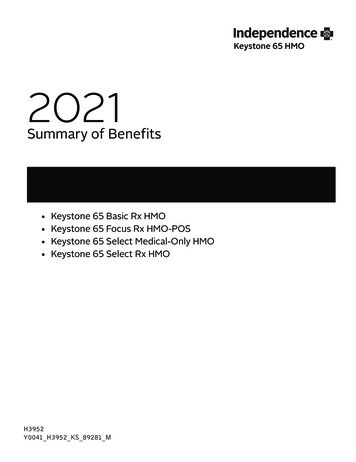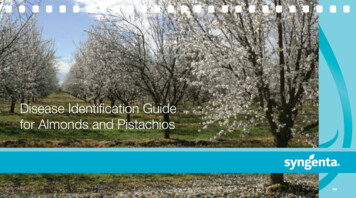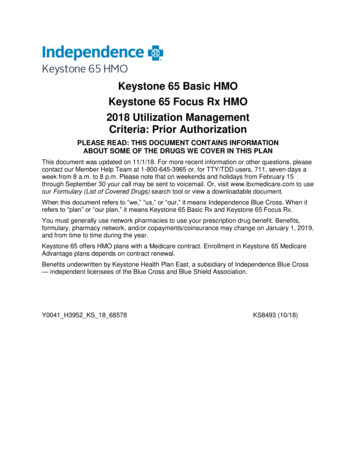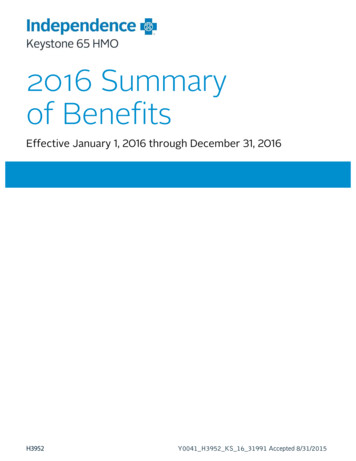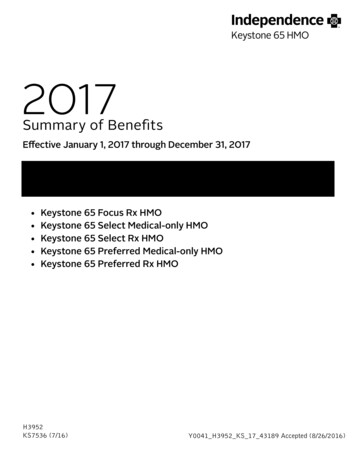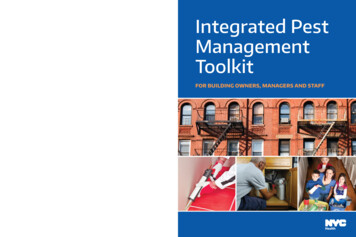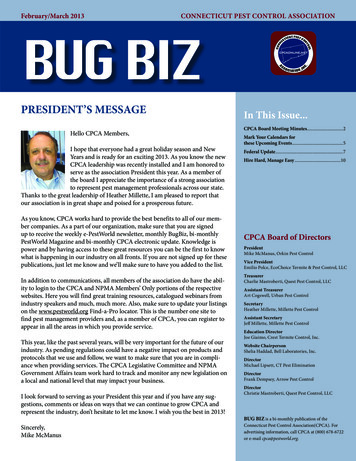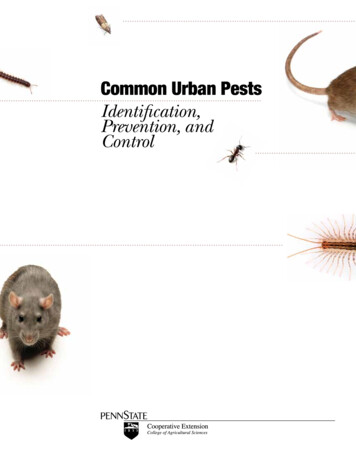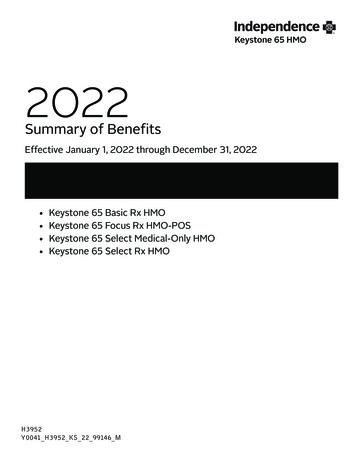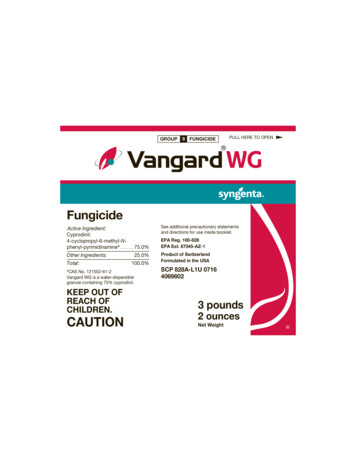
Transcription
GROUP9 FUNGICIDEPULL HERE TO OPENFungicideActive yl-pyrimidinamine* . . . . . 75.0%See additional precautionary statementsand directions for use inside booklet.Other Ingredients:Product of SwitzerlandFormulated in the USATotal:25.0%100.0%*CAS No. 121552-61-2Vangard WG is a water-dispersiblegranule containing 75% cyprodinil.KEEP OUT OFREACH OFCHILDREN.CAUTIONEPA Reg. 100-828EPA Est. 67545-AZ-1SCP 828A-L1U 071640696023 pounds2 ouncesNet Weight
FIRST AIDIf in eyes Hold eye open and rinse slowly and gently with water for 15-20 minutes.Remove contact lenses, if present, after the first 5 minutes, then continuerinsing. Call a poison control center or doctor for treatment advice.If on skinor clothing Take off contaminated clothing. Rinse skin immediately with plenty of water for 15-20 minutes. Call a poison control center or doctor for treatment advice.NOTE TO PHYSICIANIf ingested, induce emesis or lavage stomach. Treat symptomatically.Have the product container or label with you when calling a poison control center or doctor,or going for treatment.HOT LINE NUMBERFor 24-Hour Medical Emergency Assistance (Human or Animal) orChemical Emergency Assistance (Spill, Leak, Fire, or Accident)Call1-800-888-8372PRECAUTIONARY STATEMENTSHazards to Humans and Domestic AnimalsCAUTIONCauses moderate eye irritation. Harmful if absorbed through skin. Avoid contact with skin, eyes, orclothing. Wash thoroughly with soap and water after handling and before eating, drinking, chewing gum, using tobacco or using the toilet. Remove and wash contaminated clothing before reuse.continued.
PRECAUTIONARY STATEMENTS (continued)Personal Protective Equipment (PPE)Some materials that are chemical-resistant to this product are listed below.All other applicators and other handlers must wear: Long-sleeved shirt and long pants Chemical-resistant gloves made of any waterproof materials such as polyethylene or polyvinyl chloride Shoes plus socksIn addition, mixers and loaders for aerial and groundboom applications must wear: Filtering facepiece respirator (N95, R95, or P95) (e.g., a dustmask)User Safety RequirementsFollow manufacturer’s instructions for cleaning/maintaining PPE. If no such instructions for washables exist, use detergent and hot water. Keep and wash PPE separately from other laundry.Engineering Control StatementsWhen handlers use closed systems, enclosed cabs, or aircraft in a manner that meets the requirements listed in the Worker Protection Standard (WPS) for agricultural pesticides [40 CFR 170.240(d)(4-6)], the handler PPE requirements may be reduced or modified as specified in the WPS.User Safety RecommendationsUsers should: Wash hands before eating, drinking, chewing gum, using tobacco, or using the toilet. Remove clothing/PPE immediately if pesticide gets inside. Then wash thoroughly andput on clean clothing. Remove PPE immediately after handling this product. Wash the outside of gloves beforeremoving. As soon as possible, wash thoroughly and change into clean clothing.
Environmental HazardsThis pesticide is toxic to fish and aquatic invertebrates. For terrestrial uses: Do not apply directly towater, or to areas where surface water is present or to intertidal areas below the mean high watermark. Do not apply when weather conditions favor drift from treated areas. Drift and runoff fromtreated areas may be hazardous to aquatic organisms in water adjacent to treated areas. Do notcontaminate water when disposing of equipment washwater or rinsate.Surface and Ground Water AdvisoryThis chemical may contaminate water through runoff. This product may impact surface waterquality due to runoff of rain water. This is especially true for poorly draining soils and soils withshallow ground water. This chemical has a potential for runoff for several months or more afterapplication. Poorly draining soils and soils with shallow water tables are more prone to producerunoff that contains this chemical. A level, well maintained vegetative buffer strip between areasto which this chemical is applied and surface water features such as ponds, streams, and springs willreduce the potential loading of cyprodinil from runoff water and sediment. Runoff of this productwill be reduced by avoiding applications when rainfall is forecasted to occur within 48 hours. Sounderosion control practices will reduce this product’s potential to reach aquatic sediment via runoff.Physical or Chemical HazardsDo not use, pour, spill or store near heat or open flame.CONDITIONS OF SALE AND LIMITATION OF WARRANTY AND LIABILITYNOTICE: Read the entire Directions for Use and Conditions of Sale and Limitation of Warrantyand Liability before using this product. If the terms are not acceptable, return the product atonce, unopened, and the purchase price will be refunded.
The Directions for Use of this product must be followed carefully. It is impossible to eliminate allrisks inherently associated with the use of this product. Crop injury, ineffectiveness or other unintended consequences may result because of such factors as manner of use or application, weatheror crop conditions, presence of other materials or other influencing factors in the use of the product, which are beyond the control of SYNGENTA CROP PROTECTION, LLC or Seller. To the extentpermitted by applicable law, Buyer and User agree to hold SYNGENTA and Seller harmless for anyclaims relating to such factors.SYNGENTA warrants that this product conforms to the chemical description on the label and isreasonably fit for the purposes stated in the Directions for Use, subject to the inherent risks referredto above, when used in accordance with directions under normal use conditions. To the extent permitted by applicable law: (1) this warranty does not extend to the use of the product contrary tolabel instructions or under conditions not reasonably foreseeable to or beyond the control of Selleror SYNGENTA, and (2) Buyer and User assume the risk of any such use. TO THE EXTENT PERMITTEDBY APPLICABLE LAW, SYNGENTA MAKES NO WARRANTIES OF MERCHANTABILITY OR OF FITNESSFOR A PARTICULAR PURPOSE NOR ANY OTHER EXPRESS OR IMPLIED WARRANTY EXCEPT ASWARRANTED BY THIS LABEL.To the extent permitted by applicable law, in no event shall SYNGENTA be liable for any incidental, consequential or special damages resulting from the use or handling of this product. TOTHE EXTENT PERMITTED BY APPLICABLE LAW, THE EXCLUSIVE REMEDY OF THE USER OR BUYER,AND THE EXCLUSIVE LIABILITY OF SYNGENTA AND SELLER FOR ANY AND ALL CLAIMS, LOSSES,INJURIES OR DAMAGES (INCLUDING CLAIMS BASED ON BREACH OF WARRANTY, CONTRACT,NEGLIGENCE, TORT, STRICT LIABILITY OR OTHERWISE) RESULTING FROM THE USE OR HANDLINGOF THIS PRODUCT, SHALL BE THE RETURN OF THE PURCHASE PRICE OF THE PRODUCT OR, AT THEELECTION OF SYNGENTA OR SELLER, THE REPLACEMENT OF THE PRODUCT.SYNGENTA and Seller offer this product, and Buyer and User accept it, subject to the foregoingConditions of Sale and Limitation of Warranty and Liability, which may not be modified except bywritten agreement signed by a duly authorized representative of SYNGENTA.
DIRECTIONS FOR USEIt is a violation of Federal Law to use this product in a manner inconsistent with its labeling.Do not apply this product in a way that will contact workers or other persons, either directly orthrough drift. Only protected handlers may be in the area during application. For any requirementsspecific to your State or Tribe, consult the agency responsible for pesticide regulation.AGRICULTURAL USE REQUIREMENTSUse this product only in accordance with its labeling and with the Worker Protection Standard,40 CFR part 170. This Standard contains requirements for the protection of agricultural workerson farms, forests, nurseries, and greenhouses, and handlers of agricultural pesticides. It containsrequirements for training, decontamination, notification, and emergency assistance. It alsocontains specific instructions and exceptions pertaining to the statements on this label aboutpersonal protective equipment (PPE) and restricted-entry interval. The requirements in this boxonly apply to uses of this product that are covered by the Worker Protection Standard.Do not enter or allow worker entry into treated areas during the restricted-entry interval (REI)of 12 hours.PPE required for early entry to treated areas that is permitted under the Worker ProtectionStandard and that involves contact with anything that has been treated, such as plants, soil, orwater is: Coveralls Chemical-resistant gloves made of any waterproof material Shoes plus socksPRODUCT INFORMATIONVangard WG is a broad spectrum fungicide which controls certain diseases in fruits, nuts andvegetables.
PRODUCT USE PRECAUTIONSFAILURE TO FOLLOW DIRECTIONS AND PRECAUTIONS ON THIS LABEL MAY RESULT IN CROPINJURY, POOR DISEASE CONTROL, AND/OR ILLEGAL RESIDUES.APPLICATION INFORMATIONVangard WG fungicide has preventative and systemic properties and is labeled for the control ofmany important plant diseases. Vangard WG provides excellent disease control of Botrytis, severalleaf spots and powdery mildews. Vangard WG is applied as a foliar spray and can be used in block,alternating spray, or tank-mix programs with other crop protection products. Make all applicationsaccording to the use directions that follow.PRODUCT USE INSTRUCTIONSApplication: Thorough coverage is necessary to provide good disease control. Make no more spraysolution than is needed for application. Avoid spray overlap, as crop injury may occur.Adjuvants: When an adjuvant is to be used with this product, Syngenta recommends the use of aChemical Producers and Distributors Association certified adjuvant.Efficacy: Under certain conditions conducive to extended infection periods, use another registeredfungicide for additional applications if the maximum amount of Vangard WG has been used. Ifresistant isolates to Group 9 fungicides are present, efficacy can be reduced for certain diseases.The higher rates in the rate range and/or shorter spray intervals may be required under conditionsof heavy infection pressure, with highly susceptible varieties, or when environmental conditionsare conducive to disease.Integrated Pest Management (IPM): Integrate Vangard WG into an overall disease and pest management strategy whenever the use of a fungicide is required. Follow cultural practices known toreduce disease. Consult your local agricultural authorities for additional IPM strategies established
for your area. Vangard WG may be used in State Agricultural Extension advisory (disease forecasting) programs which recommend application timing based on environmental factors favorable fordisease development.RESISTANCE MANAGEMENTGROUP9FUNGICIDEVangard WG contains the fungicide cyprodinil, an anilinopyrimidine in Group 9. A disease management program that includes alternation or tank mixes between Vangard WG and other labeledfungicides that have a different mode of action is essential to prevent pathogen populations fromdeveloping resistance to Vangard WG. Do not alternate or tank mix this product with fungicides towhich resistance has already developed. Vangard WG may be applied in an alternating or blockingprogram.As part of a resistance management strategy: Apply no more than 2 sequential applications unless otherwise stated in the crop section. When tank mixing or alternating, use an effective partner – one that provides satisfactorydisease control when used alone at the mixture rate.Crop Tolerance: Plant tolerance has been found to be acceptable for all crops on the label, however,not all possible tank-mix combinations have been tested under all conditions. When possible, testthe combinations on a small portion of the crop to ensure that a phytotoxic response will not occuras a result of application.Spray Drift Management: To avoid spray drift, do not apply when conditions favor drift beyondthe target area. The interaction of many equipment and weather related factors determine thepotential for spray drift. AVOIDING SPRAY DRIFT AT THE APPLICATION SITE IS THE RESPONSIBILITYOF THE APPLICATOR AND THE GROWER. More information on managing spray drift can be foundon the SYNGENTA CROP PROTECTION website under Stewardship riftmanagement/index.asp?nav drift management).
Rotational Crop RestrictionsDo not plant any crop which is not registered for use with cyprodinil for a period of 30 days, unlessa shorter interval is specified on the following list.Rotational CropPlanting Time FromLast Vangard WGApplicationArtichoke, GlobeBeans (dried and succulent except cowpeas)Berries (bushberries 13-07B, caneberries 13-07A)Brassica (Cole) Leafy VegetablesCucurbitsHerbs (fresh and dried)Leafy VegetablesLeaves of Root and Tuber VegetablesOnions (dry bulb, garlic, and green)PeppersTuberous and Corm Vegetables (crop subgroup 1C)Root and Tuber Vegetables, except Sugar beetStrawberriesTomatoes and tomatillosWatercressCrops Not Intended for Food or Feed0 daysAll Other Crops Intended for Food or Feed30 daysRestriction: In annual crops, where multiple crops can be grown per year (double/triple cropping),do not apply more than 1.3 lb ai per acre per year to an individual plot of land.
APPLICATION AND MIXING PROCEDURESMixingPrepare no more spray mixture than is needed for the immediate operation. Thoroughly cleanspray equipment before using this product. Vigorous agitation is necessary for proper dispersal ofthe product. Maintain maximum agitation throughout the spraying operation. Do not let the spraymixture stand overnight in the spray tank. Flush the spray equipment thoroughly following eachuse and apply the rinsate to a previously treated area. Buffer the spray solution to a pH of 5.0-7.0when tank mixed with Rovral Fungicide.Vangard WG Alone: Add 1/2 of the required amount of water to the mix tank. With the agitatorrunning, add the Vangard WG to the tank. Continue agitation while adding the remainder of thewater. Begin application of the solution after the Vangard WG has completely dispersed into themix water. Maintain agitation until all of the mixture has been applied.Vangard WG Tank Mixtures: Add 1/2 of the required amount of water to the mix tank. Start theagitator running before adding any tank-mix partners. In general, add tank-mix partners in thisorder: products packaged in water-soluble packaging, wettable powders, wettable granules (dryflowables) such as Vangard WG, liquid flowables, liquids, and emulsifiable concentrates. Alwaysallow each tank-mix partner to become fully dispersed before adding the next product. Providesufficient agitation while adding the remainder of the water. Maintain agitation until all the mixture has been applied.When using Vangard WG in tank mixtures, add all products in water-soluble packaging tothe tank before any other tank-mix partner, including Vangard WG. Allow the water-solublepackaging to completely dissolve and the product(s) to completely disperse before adding anyother tank-mix partner to the tank.If using Vangard WG in a tank mixture, observe all directions for use, crops/sites, use rates, dilutionratios, precautions, and limitations which appear on the tank mix product label. Do not exceedlabel dosage rates, and follow the most restrictive label precautions and limitations. Vangard WGmust not be mixed with any product which prohibits such mixing. Tank mixtures or other applications of products referenced on this label are permitted only in those states in which the referencedproducts are registered.
Additives: Vangard WG is compatible with most crop protection additives. Do not use X-77 withVangard WG for bloom sprays applied to stone fruits, almonds and pistachios.ApplicationFor best disease control, apply Vangard WG in sufficient water to provide thorough and uniformcoverage. Use minimum ground spray volumes of 50 gal/A for tree crops, 30 gal/A for vine crops,and 15 gal/A for field and vegetable crops. For aerial application, see spray volume requirementsin the specific crop directions for use.To prevent spray drift, do not apply when conditions favor drift beyond the target area. Sprayoverlap may cause crop injury.For air assisted or air blast sprayers, move spray droplets into the canopy using a forced air stream.Set up the fan to deliver only enough air volume to penetrate the canopy and provide goodcoverage. Adjust deflectors or other aiming devices to direct spray only to the target area.Equip sprayers with nozzles that provide accurate and uniform application. Check whirl plates andnozzle discs for wear and replace as necessary. Calibrate sprayer before use.Use a pump with capacity to maintain the correct rated pressure for the nozzles selected. Maintainsufficient agitation to keep the spray mixture in suspension. Use a jet agitator, liquid sparge tube,or mechanical paddle for agitation. Do not air sparge.Use screens to prevent nozzles from clogging. Use 50-mesh or coarser screens placed after the tankand before the nozzles. Check nozzle manufacturer’s recommendations.For more information on spray equipment and calibration, consult sprayer manufacturers andstate recommendations. For specific local directions and spray schedules, consult the current stateagricultural experiment station recommendations.OBSERVE THE FOLLOWING RESTRICTIONS WHEN SPRAYING IN THE VICINITY OF AQUATIC AREASSUCH AS LAKES, RESERVOIRS, RIVERS, PERMANENT STREAMS, MARSHES OR NATURAL PONDS,ESTUARIES, AND COMMERCIAL FISH PONDS. Do not apply within 75 ft of bodies of water such as lakes, reservoirs, rivers, permanent streams,natural ponds, marshes or estuaries. Shut off the sprayer when row ends.
Do not cultivate within 10 ft of aquatic areas in order to allow a vegetative filter strip. Do not apply when weather conditions favor drift to aquatic areas. Do not apply when gusts orsustained winds exceed 10 mph. Do not apply during a temperature inversion. Mist or fog may indicate the presence of an inversion in humid areas. For perennial crops such as tree crops and grapes:¾ For all plantings within 150 ft of bodies of water as described above, spray crops from outsidethe planting away from the bodies of water.¾ Spray last three rows windward of aquatic areas using nozzles on one side only, with spraydirected away from aquatic areas. Adjust or turn off top nozzles to prevent spray going overthe tops of trees. Shut off nozzles on the side away from the grove/orchard when spraying theoutside row. Shut off nozzles when turning at ends of row or passing tree gaps in the rows.Aerial Spray DirectionsAvoid applications under conditions when uniform coverage cannot be obtained or when excessivedrift may occur.Aerial Spray RestrictionsObserve the following restrictions when spraying in the vicinity of aquatic areas such as lakes,reservoirs, rivers, permanent streams, marshes or natural ponds, estuaries and commercial fishponds. Use only on crops where aerial applications are indicated. Do not apply by air within 150 ft of lakes, reservoirs, rivers, permanent streams, marshes ornatural ponds, estuaries and commercial fish ponds. Mount the spray boom on the aircraft so as to minimize the drift caused by wing tip vortices. Usethe minimum practical boom length, and do not exceed 75% of wing span or rotor diameter. Release spray at the lowest height consistent with pest control and flight safety. Do not makeapplications more than 10 feet above the crop canopy.
Do not apply when weather conditions favor drift to aquatic areas. Do not apply when gusts orsustained winds exceed 10 mph. Do not apply during a temperature inversion. Mist or fog may indicate the presence of an inversion in humid areas.Aerial Spray PrecautionsObserve the following precautions when spraying in the vicinity of aquatic areas such as lakes, reservoirs,rivers, permanent streams, marshes or natural ponds, estuaries and commercial fish ponds. Use the largest droplet size consistent with good pest control. Formation of very small droplets may be minimized by appropriate nozzle selection, by orientatingnozzles away from the air stream as much as possible, and by avoiding excessive spray boom pressure. Reduce risk of exposure to aquatic areas by avoiding applications when wind direction is towardthe aquatic area. Low humidity and high temperatures increase the evaporation rate of spray droplets, and thereforethe likelihood of increased spray drift to aquatic area. Avoid spraying during conditions of lowhumidity and/or high temperatures.Application Through Irrigation Systems (Chemigation) Use only on crops for which chemigation is specified on this label. Apply this product only through center pivot, solid set, hand move, or moving wheel irrigationsystems. Do not apply this product through any other type of irrigation system. Crop injury, lack of effectiveness, or illegal pesticide residues in the crop can result from nonuniform distribution of treated water. Apply in 0.125-0.25 inches/A of water. Excessive water may reduce efficacy. If you have questions about calibration, you should contact State Extension Service specialists,equipment manufacturers, or other experts. Do not connect an irrigation system (including greenhouse systems) used for pesticide application to a public water system, unless the pesticide label-prescribed safety devices for public watersystems are in place.
A person knowledgeable of the chemigation system and responsible for its operation, or underthe supervision of the responsible person, shall shut the system down and make necessary adjustments should the need arise.Note: Do not inject Vangard WG at full strength or deterioration of valves and seals may occur.Use a dilution ratio of at least 10 parts water to 1 part Vangard WG. Vangard WG is corrosive tomany seal materials. Leather seals are best. EPDM or silicone rubber seals can be used, but shouldbe replaced once a year. Do not use Viton , Buna-N, Neoprene, or PVC seals.Operating Instructions1. The system must contain a functional check-valve, vacuum relief valve, and low pressure drainappropriately located on the irrigation pipeline to prevent water-source contamination frombackflow.2. The pesticide injection pipeline must contain a functional, automatic, quick-closing check-valveto prevent the flow of fluid back toward the injection pump.3. The pesticide injection pipeline must also contain a functional, normally closed, solenoid-operatedvalve located on the intake side of the injection pump and connected to the system interlock toprevent fluid from being withdrawn from the supply tank when the irrigation system is eitherautomatically or manually shut down.4. The system must contain functional interlocking controls to automatically shut off the pesticideinjection pump when the water pump motor stops.5. The irrigation line or water pump must include a functional pressure switch which will stop thewater pump motor when the water pressure decreases to the point where pesticide distributionis adversely affected.6. Systems must use a metering pump, such as a positive displacement injection pump (e.g., diaphragm pump), effectively designed and constructed of materials that are compatible withpesticides and capable of being fitted with a system interlock.7. Do not apply when wind speed favors drift beyond the area intended.
Center Pivot Irrigation EquipmentRestrictions: (1) Use only with drive systems which provide uniform water distribution. (2) Donot use end guns when chemigating Vangard WG through center pivot systems because of nonuniform application. Determine the size of the area to be treated. Determine the time required to apply 1/8-1/2 inch of water over the area to be treated when thesystem and injection equipment are operated at normal pressures as recommended by the equipment manufacturer. When applying Vangard WG through irrigation equipment use the lowestobtainable water volume while maintaining uniform distribution. Run the system at 80-95% ofthe manufacturer’s rated capacity. Using water, determine the injection pump output when operated at normal line pressure. Determine the amount of Vangard WG required to treat the area covered by the irrigation system. Add the required amount of Vangard WG and sufficient water to meet the injection timerequirements to the solution tank. Make sure the system is fully charged with water before starting injection of the Vangard WGsolution. Time the injection to last at least as long as it takes to bring the system to full pressure. Maintain constant solution tank agitation during the injection period. Continue to operate the system until the Vangard WG solution has cleared the sprinkler head.Solid Set, Hand Move, and Moving Wheel Irrigation Equipment Determine the acreage covered by the sprinklers. Fill injector solution tank with water and adjust flow rate to use the contents over a 20 to30-minute interval. When applying Vangard WG through irrigation equipment use the lowestobtainable water volume while maintaining uniform distribution. Determine the amount of Vangard WG required to treat the area covered by the irrigation system. Add the required amount of Vangard WG into the same quantity of water used to calibrate theinjection period. Operate the system at the same pressure and time interval established during the calibration.
Stop injection equipment after treatment is completed. Continue to operate the system until theVangard WG solution has cleared the last sprinkler head.SPECIFIC INSTRUCTIONS FOR PUBLIC WATER SYSTEMS1. Public water system means a system for the provision to the public of piped water for humanconsumption if such system has at least 15 service connections or regularly serves an average ofat least 25 individuals daily at least 60 days out of the year.2. Chemigation systems connected to public water systems must contain a functional, reducedpressure zone, back-flow preventer (RPZ) or the functional equivalent in the water supply lineupstream from the point of pesticide introduction. As an option to the RPZ, the water from thepublic water system should be discharged into a reservoir tank prior to pesticide introduction.There shall be a complete physical break (air gap) between the outlet end of the fill pipe and thetop or overflow rim of the reservoir tank of at least twice the inside diameter of the fill pipe.3. The pesticide injection pipeline must contain a functional, automatic, quick-closing check valveto prevent the flow of fluid back toward the injection pump.4. The pesticide injection pipeline must contain a functional, normally closed, solenoid-operatedvalve located on the intake side of the injection pump and connected to the system interlock toprevent fluid from being withdrawn from the supply tank when the irrigation system is eitherautomatically or manually shut down.5. The system must contain functional interlocking controls to automatically shut off the pesticide injection pump when the water pump motor stops, or in cases where there is no waterpump, when the water pressure decreases to the point where pesticide distribution is adverselyaffected.6. Systems must use a metering pump, such as a positive displacement injection pump (e.g.,diaphragm pump) effectively designed and constructed of materials that are compatible withpesticides and capable of being fitted with a system interlock.7. Do not apply when wind speed favors drift beyond the area intended for treatment.
CROP USE DIRECTIONS - TREES, NUTS AND VINESCropAlmondsDiseaseBrown rot blossomblight(Monilinia spp.)Suppression:Green fruit rot(Jacket rot)(Botrytis cinerea)Shot 0RemarksApply Vangard WG at 5-10% bloom. Additionalapplications at 50-100% bloom and petal fall may benecessary.When used for control of brown rot blossom blight,Vangard WG will provide suppression of shot hole.For broad spectrum disease control in tank mixture,apply Vangard WG at a minimum rate of 5 oz in tankmixtures with other fungicides registered for use onalmonds.For suppression of green fruit rot, apply Vangard WGat full bloom.Disease suppression for almond diseases refers toerratic control from fair to good, or consistent controlat a level below that obtained with products registered for control.Application Instructions: Application may be made by ground or air. Good coverage is essential forgood disease control. Use a minimum of 20 gallons/A spray volume by air. Make no more than twoapplications by air.Specific Use Restrictions1) Make no more than two applications by air.2) Do not apply more than 30 oz/A of Vangard WG (1.4 lb ai/A of cyprodinil) per year.3) Do not apply within 60 days of harvest (60-day PHI).
CropSmall FruitVine ClimbingSubgroup13-07F(except fuzzykiwifruit)GrapesAmur rivergrapeHardy kiwifruitMaypopSchisandraberryAnd cultivarsand/or hybridsof theseDiseaseProductRateoz/AcreBotrytis bunch rot(Botrytis spp.)Vangard WGaloneSuppression:Powdery mildew(Uncinula necator)10RemarksBegin applications of Vangard WG at earlybloom. Make an additional application at berrytouch, veraison, or preharvest using at least a7-day spray interval. Botrytis bunch rot is mosteffectively controlled by ground application,using sufficient water volume to provide thorough coverage. Thorough coverage of bunchesis essential.When used at 10 oz/A, Vangard WG willprovide significant suppression (approximately60% control) of powdery mildew.Vangard WGtankmixturesApply Vangard WG in tank mixture with thelabel rate of another fungicide registered ongrapes for control of Botrytis bunch rot.5-10Application Instructions: Application may be made by ground or air. Good coverage is essential forgood disease control. Use a minimum of 20 gallons/A spray volume by air. Make no more than twoapplications by air.Specific Use Restrictions1) Make no more than two applications by air.2) Do not apply
dental, consequential or special damages resulting from the use or handling of this product. to the extent permitted by applicable law, the exclusive remedy of the user or buyer, and the exclusive liability of syngenta and seller for any and all claims, losses, injuries or damages (including claims based on breach of warranty, contract, negligence, tort, strict liability or otherwise .
